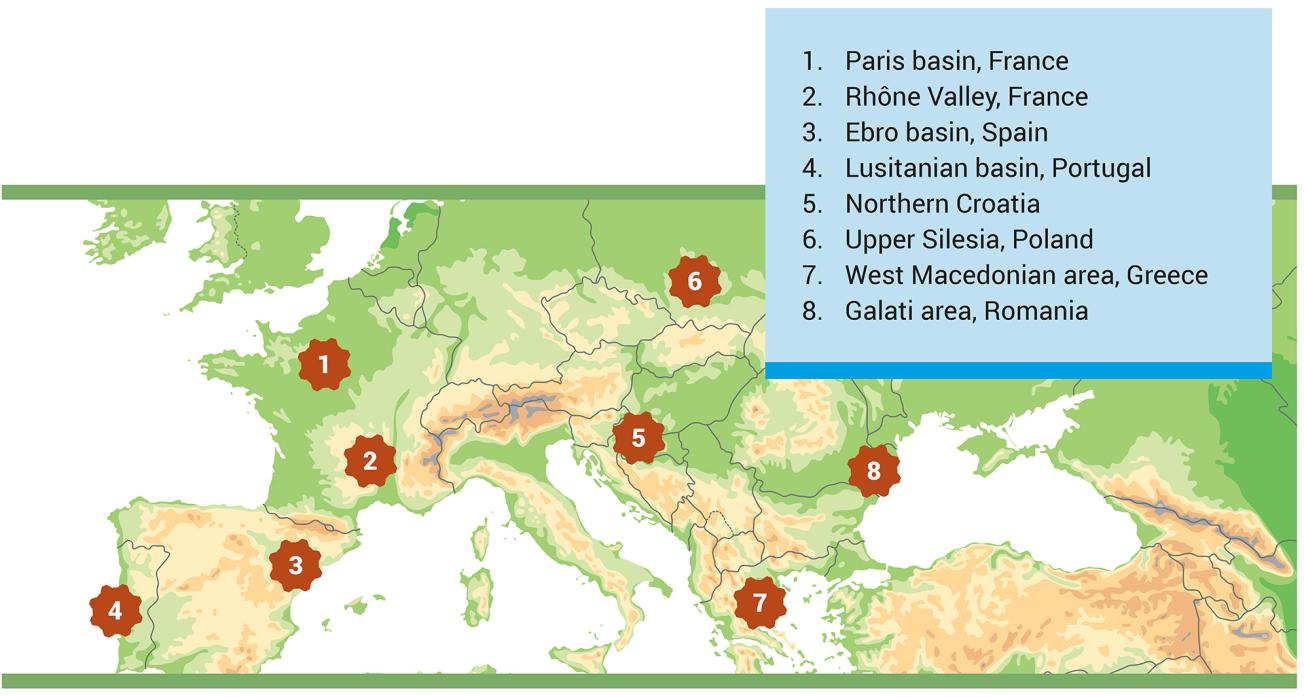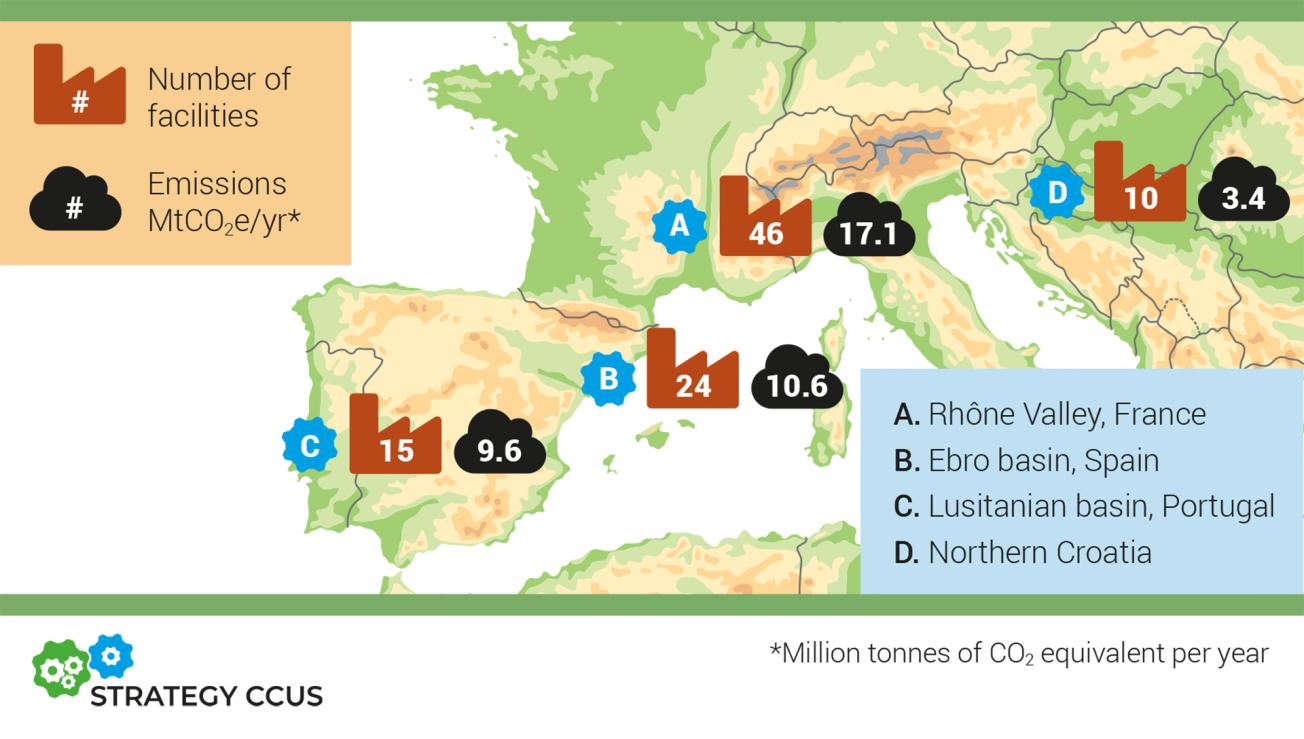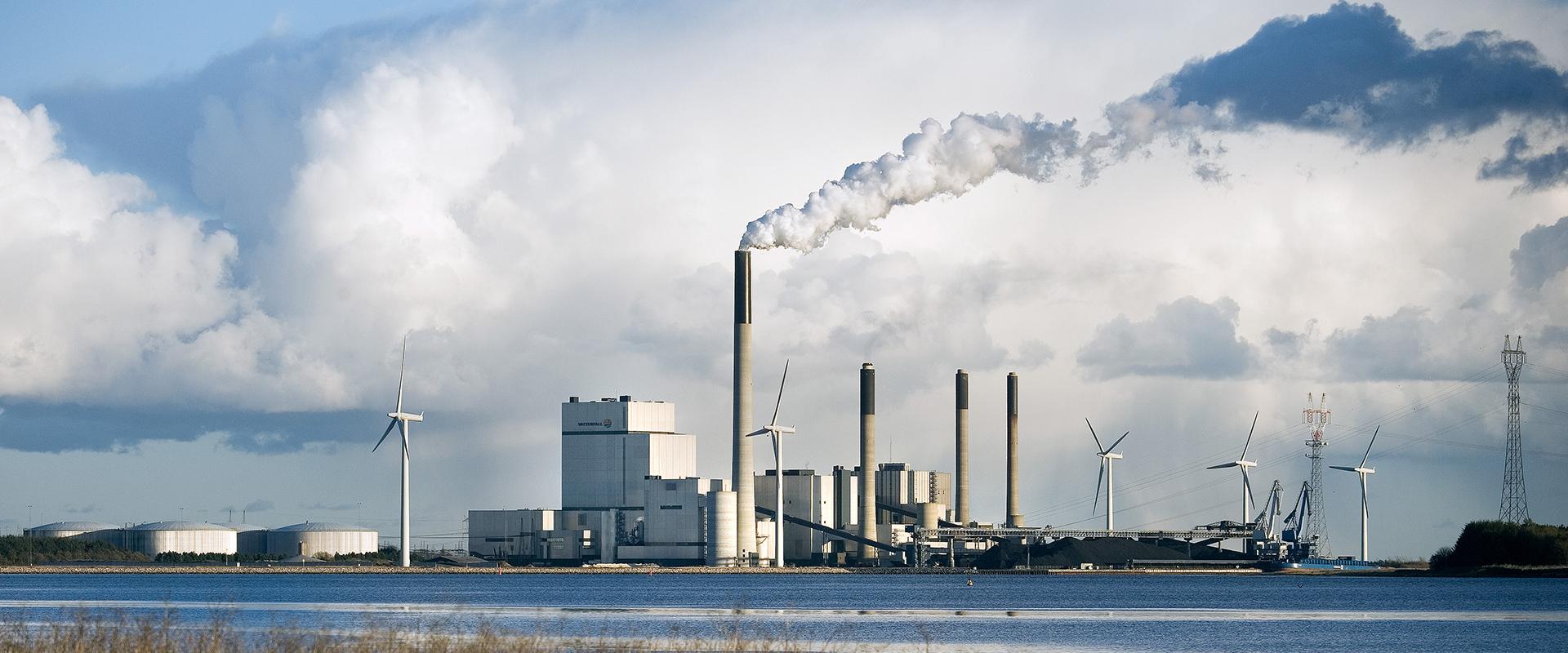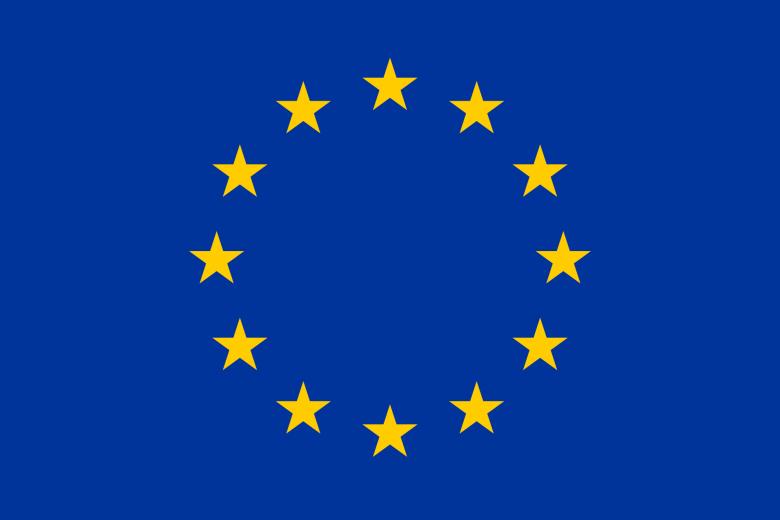
Promising regions in Eastern and Southern Europe.
© STRATEGY CCUS
Issues and needs
Today, everyone agrees that Carbon Capture, Utilisation and Storage (CCUS) is a key factor in achieving the objectives of the Paris Agreement, because of the significant reduction in CO2 emissions that it opens up for the European industrial and energy sectors.
CCUS reduces "non-avoidable" non-energy emissions, as well as the energy still emitted during the energy transition period. It is a mature technology option that can be implemented quickly and massively to help achieve the drastic emission reductions that countries committed to under the Paris Agreement. In 2017, the International Energy Agency (IEA) announced that CCUS was not being developed fast enough to meet the 2015 Paris Agreement target.

Our intention is to provide governments and citizens of Southern and Eastern Europe with an overview of the feasibility of CCUS development in their regions, while linking it closely to a wide range of local socio-economic activities. Our aim is to help regions achieve carbon neutrality with roadmaps that are achievable in the short, medium and long term.
The STRATEGY CCUS project, a 3-year, EU-funded H2020 CSA (Coordination and Support Action) project (April 2019 to July 2022), aims to promote the transition to low carbon emissions in Eastern and Southern Europe. Eight promising regions have been identified in 7 European countries (France, Spain, Portugal, Croatia, Poland, Greece and Romania) to study the possibilities and prospects for deploying these technologies. Among its activities, the consortium has planned:
- to explore development avenues: emission zones, potential storage sites, transport infrastructures and transport corridors and possibilities for valorising CO2 capture, utilisation and storage,
- to carry out economic and environmental studies such as an in-depth life cycle assessment (LCA) [1] and a technical and economic analysis (TEA), to support proposals (scenario building) and the exploitation of results,
- to work and collaborate with local and decision-making stakeholders at regional, national and European levels by consulting them and taking into account their feelings, needs and expectations throughout the project.
The objective is to establish detailed roadmaps on carbon capture, use and storage (CCUS) and propose solutions that can be applied in other regions, in particular for non-energy emissions, which result from industrial processes (cement plants, incinerators, fermentation processes, distillation, etc.).

The success of CCUS strategies depends to a large extent on local situations. In addition to technical and structural criteria, this includes various societal aspects that can partly be assessed in techno-economic evaluations and life cycle analyses. But in order to obtain information and knowledge about the acceptance aspects in a specific region, it is very important to include the relevant stakeholders as early as possible. Collaboration with stakeholders in the STRATEGY CCUS project will ensure the future viability of the technology options developed.
Results and use
In April 2020, the partners of the STRATEGY CCUS project selected three of these eight "promising" regions in Southern and Eastern Europe to benefit from these detailed CCUS roadmaps.
The regions selected for further study have the best potential for large-scale deployment of these climate mitigation technologies: existence of clusters, options for transport and geological storage of CO2, possibilities for CO2 utilisation. They cover the following industrial and geological areas:
- The Rhone Valley in France includes the Fos-Berre/Marseille CSU cluster covered by Action 9 of the SET-Plan (as a flagship project), and the Lyon metropolitan area.
- The Ebro basin in Spain includes the industrial area of Tarragona and the regions of North Castellón and North Teruel.
- The Lusitanian Basin in Portugal includes CO2 sources along the Leiria-Figueira da Foz axis and extends to the Lisbon industrial region.

Four regions studied in more detail, with the number of industrial sites and CO2 emissions for each one.
© STRATEGY CCUS
The three selected regions are currently undergoing an in-depth life cycle assessment (LCA) and a Multiregional Input Output Assessment (MRIO) in addition to the economic analysis that is being conducted for all 8 regions.
- The Life Cycle Assessment (LCA) will assess the environmental impacts of the deployment of the CCUS at all stages (from development to full-scale operational implementation, including emissions, intrinsic energy and resource use).
- The MRIO analysis will examine the socio-economic impact of the deployment of CCUS technology on the valorisation of products or services, on the gross domestic product (GDP) and on job creation.
In line with their aim to promote a transition to low-carbon emissions in Eastern and Southern Europe, the project partners have also developed a detailed economic model on CCUS for northern Croatia, which came fourth in the selection process, offering opportunities for the use of CO2 for enhanced oil recovery (EOR).

CO2 injection and storage: proposed baseline scenarios for future developments.
© BRGM
The other four regions – France (Paris-Ile de France Basin), Greece, Poland and Romania, which are part of the initial group identified as promising for the development of CCUS technologies – will be the subject of economic studies during the new phases of the STRATEGY CCUS project.
These results for the eight regions studied, expected in early 2022, will be used as input for the scenarios for the deployment of CCUS in 10, 20 and 30 years.
Concomitantly, regular stakeholder consultation and surveys at different levels (regional, national and European) will continue in order to underpin the technical-economic and environmental studies and to ensure the feasibility and viability of the proposed scenarios and the support of local stakeholders.
The resulting roadmaps, which will offer business models, technical know-how and best practice on issues such as social acceptance, aim to demonstrate to national governments and regional authorities and businesses that the development of CCUS is both feasible and essential to meeting the Paris Agreement's commitments to climate action.

The STRATEGY CCUS project firmly addresses both an issue, CCUS, and geographical areas, Southern and Eastern Europe, that need to be explored if we are to tackle industry's CO2 emissions. The eight regions each have their own strengths and areas for improvement, and several of them would benefit from being studied jointly to ensure that synergism is put to good use. CCUS technologies require teamwork on a European scale and STRATEGY CCUS contributes to this goal.
BRGM's role
The STRATEGY CCUS project – Strategic planning of Regions and Territories in Europe for low-carbon energy and industry through CCUS, Coordination and Support Action – is led by BRGM, the French geological survey, in collaboration with 17 scientific and industrial partners from 10 European countries (France, Spain, Portugal, Greece, Croatia, United Kingdom, Romania, Poland, Germany and Norway).
It has received funding from the European Union’s Horizon 2020 research and innovation programme under grant agreement No. 837754. It started in 2019 and will continue until 2022.
BRGM is:
- Project coordinator.
- Co-leader of Working Group WP2 for the mapping of the technical potential of the promising regions studied.
Partners
- France: BRGM (Coordinator), IFPen, Total
- Spain: IGME, CIEMAT
- Portugal: Universidade de Évora, Universidade Nova Lisboa, CIMPOR, DGEG
- Croatia: University of Zagreb
- Romania: Geoecomar, SNSPA
- Greece: CERTH
- Poland: GIG
- Germany: Fraunhofer ISI
- Norway: NORCE
- United Kingdom: University of Edinburgh (SCCS)
PilotSTRATEGY, a new project coordinated by BRGM following STRATEGY CCUS
Following the achievements of the STRATEGY CCUS project, BRGM is coordinating the H2020 project PilotSTRATEGY – pilots for geological storage of CO2 in strategic regions – which aims to develop geological storage sites for CO2 in Europe. This 5-year project continues the studies already undertaken in five industrial regions in Eastern and Southern Europe.








